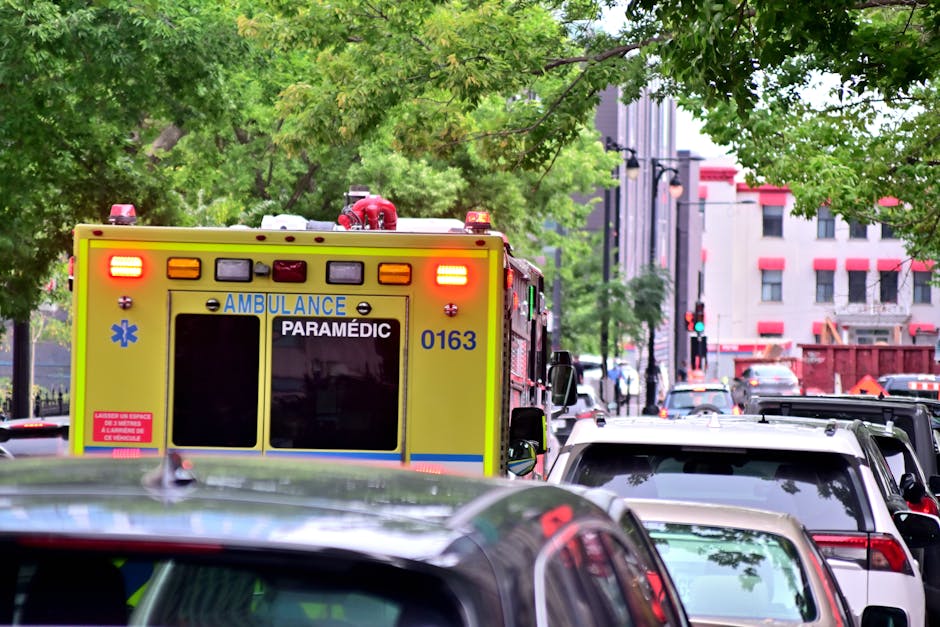The Best Cars for Paramedics: A Comprehensive Guide to Emergency Response Vehicles
When every second counts, the vehicle a paramedic drives can make the difference between life and death. Paramedics require cars that are not only fast and reliable but also spacious enough to carry essential medical equipment while ensuring patient comfort. Whether responding to emergencies in urban areas or navigating rural roads, the right vehicle enhances efficiency, safety, and effectiveness.
This guide explores the best cars for paramedics, considering factors such as speed, durability, cargo space, fuel efficiency, and advanced safety features. From rugged SUVs to agile sedans and specialized emergency vehicles, we’ll examine the top choices that meet the demanding needs of emergency medical services (EMS).
Key Features Paramedics Need in a Vehicle
Before diving into specific models, let’s outline the essential features that make a car suitable for paramedics:
- Speed & Acceleration – Quick response times are critical, so a powerful engine and responsive handling are must-haves.
- Spacious Interior – Ample room for medical equipment, stretchers, and additional personnel is crucial.
- Durability & Reliability – Frequent high-speed driving and emergency stops demand a vehicle built to last.
- Fuel Efficiency – Given the long hours on the road, a fuel-efficient car reduces operational costs.
- Advanced Safety Features – Stability control, collision avoidance, and reinforced structures protect both paramedics and patients.
- All-Wheel Drive (AWD) Capability – For paramedics in areas with harsh weather, AWD ensures traction on slippery roads.
- Comfort & Ergonomics – Long shifts require supportive seating and an ergonomic layout for ease of movement.
Now, let’s explore the best vehicles that meet these criteria.
1. Ford Police Interceptor Utility (Ford Explorer-Based EMS Vehicle)
Why It’s Great for Paramedics:
The Ford Police Interceptor Utility, based on the Ford Explorer, is a top choice for EMS fleets. Designed for law enforcement and emergency services, it offers:
- Powerful Engine Options: A 3.3L hybrid V6 or a turbocharged 3.0L EcoBoost V6 ensures rapid acceleration.
- Spacious Cabin: With up to 104 cubic feet of cargo space, it accommodates medical gear and stretchers.
- Durability: Heavy-duty suspension and reinforced body structure handle high-speed emergency driving.
- AWD Standard: Ensures stability in rain, snow, or off-road conditions.
- Specialized Emergency Features: Includes upgraded electrical systems for lights, sirens, and medical equipment.
Best For: Urban and suburban EMS teams needing a fast, spacious, and rugged SUV.
2. Chevrolet Tahoe PPV (Police Pursuit Vehicle)
Why It’s Great for Paramedics:
The Chevrolet Tahoe PPV is another favorite among emergency responders. Its strengths include:
- V8 Power: A 5.3L or 6.2L V8 engine delivers rapid acceleration for emergency responses.
- Massive Cargo Space: Over 94 cubic feet with seats folded, ideal for medical supplies.
- Heavy-Duty Build: Reinforced frame and suspension for high-speed stability.
- Advanced Safety: Features like automatic emergency braking and lane-keeping assist.
- Comfortable Interior: Spacious seating for paramedics and patients.
Best For: Large EMS teams requiring a full-size SUV with towing capacity for additional equipment.
3. Dodge Durango Pursuit
Why It’s Great for Paramedics:
The Dodge Durango Pursuit combines muscle car performance with SUV practicality:
- Hemi V8 Option: The 5.7L Hemi V8 provides blistering acceleration (0-60 mph in under 6 seconds).
- Ample Storage: 85 cubic feet of cargo space with fold-flat seats.
- AWD & Performance Tuning: Optimized for high-speed emergency driving.
- Durable Construction: Built to withstand rigorous use in emergency services.
Best For: Paramedics who need speed and space in a single package.
4. Mercedes-Benz Sprinter (Ambulance Conversion)
Why It’s Great for Paramedics:
For agencies needing a dedicated ambulance, the Mercedes-Benz Sprinter is a top choice:
- Customizable Layout: Can be outfitted as a full ambulance with stretchers and medical stations.
- High Roof Option: Allows paramedics to stand and move freely inside.
- Diesel & Gasoline Options: Fuel-efficient and reliable for long shifts.
- Advanced Safety: Features like blind-spot monitoring and adaptive cruise control.
Best For: EMS teams requiring a full-size ambulance with maximum medical equipment capacity.
5. Subaru Outback (For Rural & Off-Road EMS)
Why It’s Great for Paramedics:
For paramedics in rural or mountainous regions, the Subaru Outback excels:
- Standard AWD: Handles snow, mud, and rough terrain effortlessly.
- Good Fuel Economy: Up to 33 MPG highway, reducing fuel costs.
- Spacious Interior: 75 cubic feet of cargo space with seats down.
- Reliability: Known for long-lasting performance with minimal maintenance.
Best For: Paramedics in remote areas needing a dependable, all-weather vehicle.
6. Tesla Model Y (For Eco-Friendly EMS Fleets)
Why It’s Great for Paramedics:
As EMS agencies shift toward sustainability, the Tesla Model Y offers:
- Instant Acceleration: 0-60 mph in as little as 3.5 seconds (Performance model).
- Low Operating Costs: No gas, minimal maintenance, and long battery life.
- Spacious Interior: 68 cubic feet of cargo space, plus a front trunk (frunk).
- Autopilot Features: Can assist with highway driving during long shifts.
Best For: Urban EMS teams looking to reduce emissions without sacrificing performance.
Conclusion: Choosing the Right EMS Vehicle
The best car for paramedics depends on their specific needs—whether it’s speed, space, off-road capability, or fuel efficiency. Ford’s Police Interceptor Utility and Chevrolet Tahoe PPV are excellent for urban EMS, while the Mercedes Sprinter is ideal for full ambulance conversions. For rural responders, the Subaru Outback shines, and eco-conscious teams may prefer the Tesla Model Y.
Ultimately, the right vehicle enhances a paramedic’s ability to save lives—ensuring they arrive quickly, safely, and fully equipped to handle any emergency.
Would you like recommendations based on a specific budget or region? Let us know in the comments! 🚑💨

